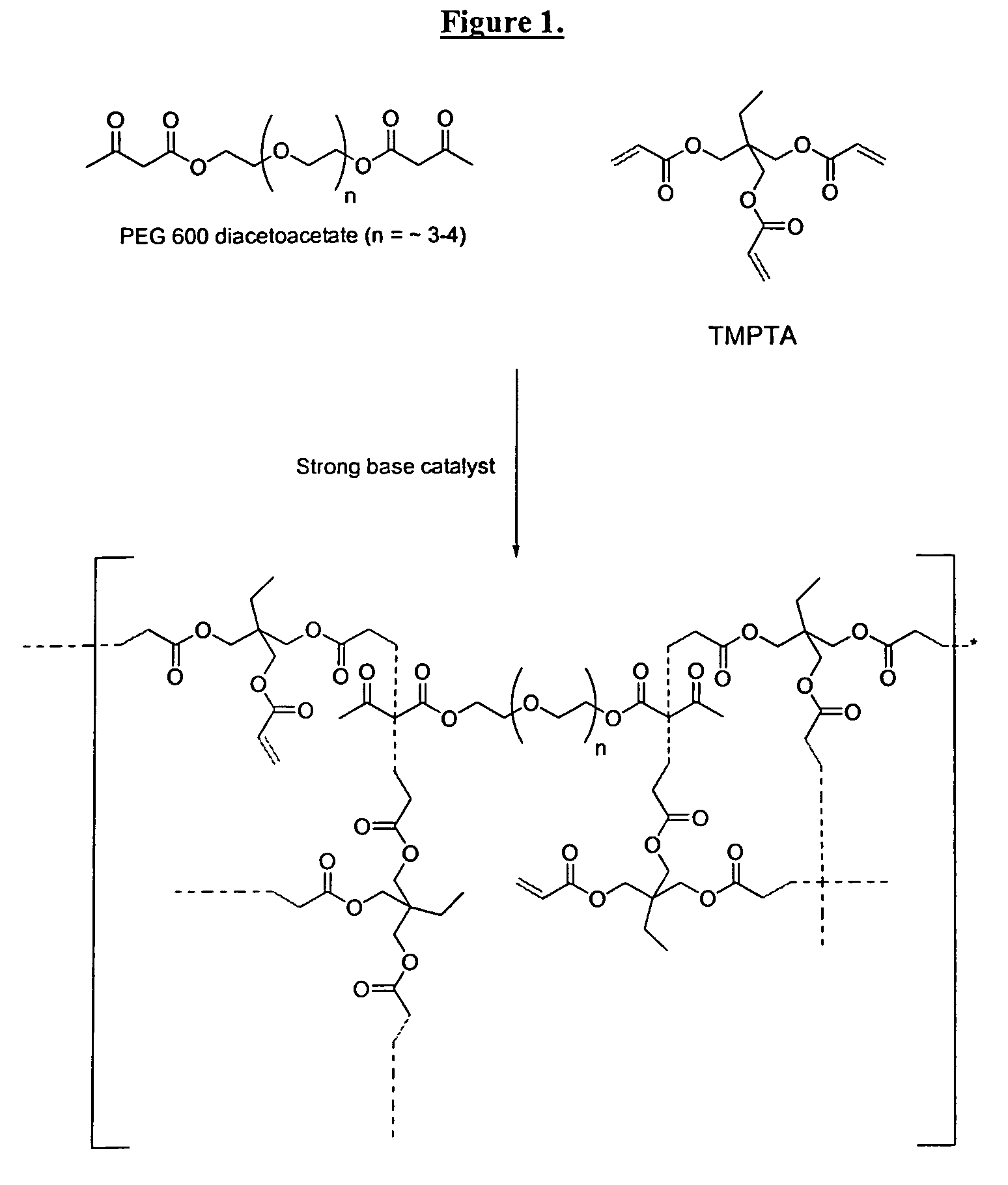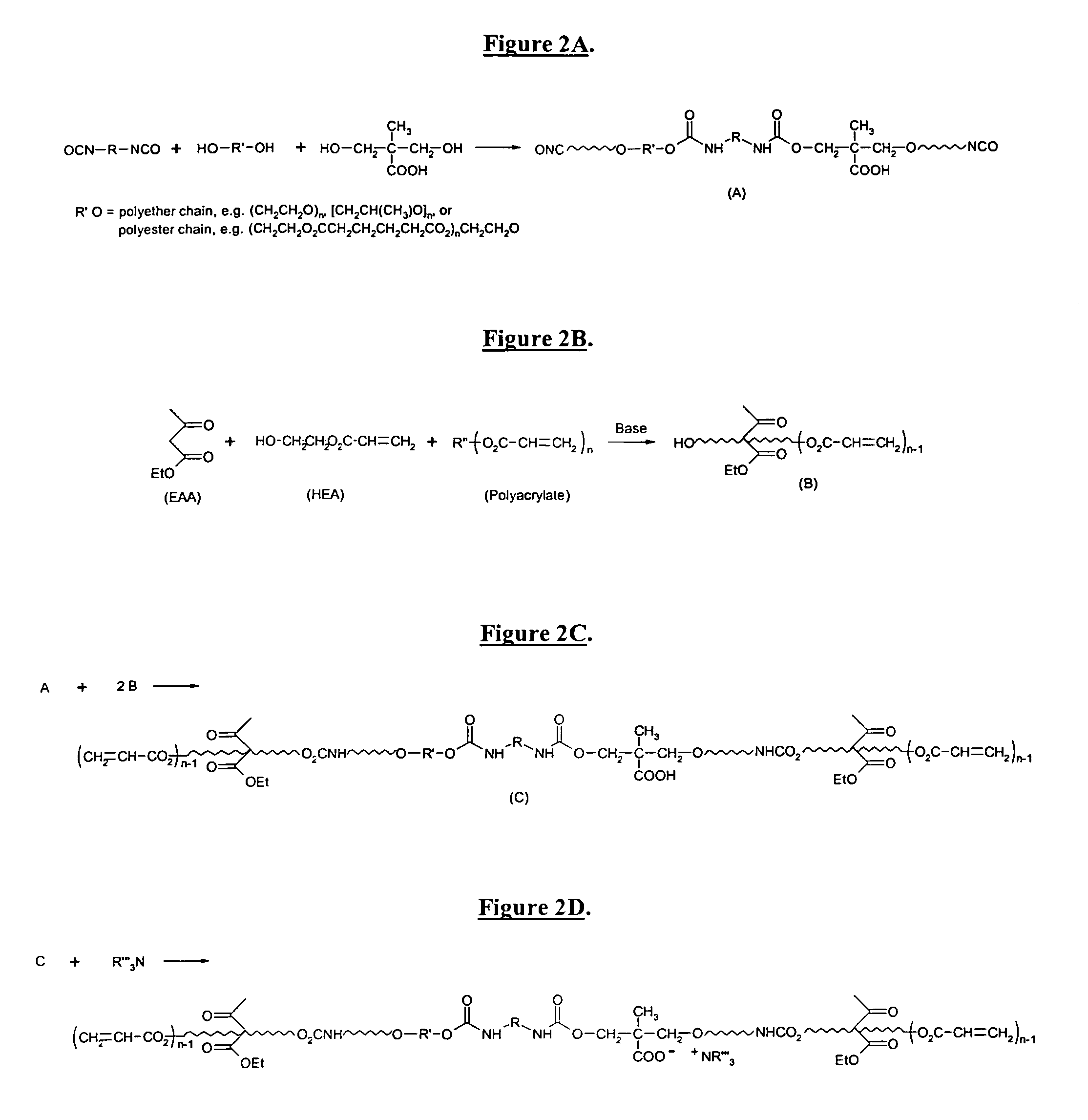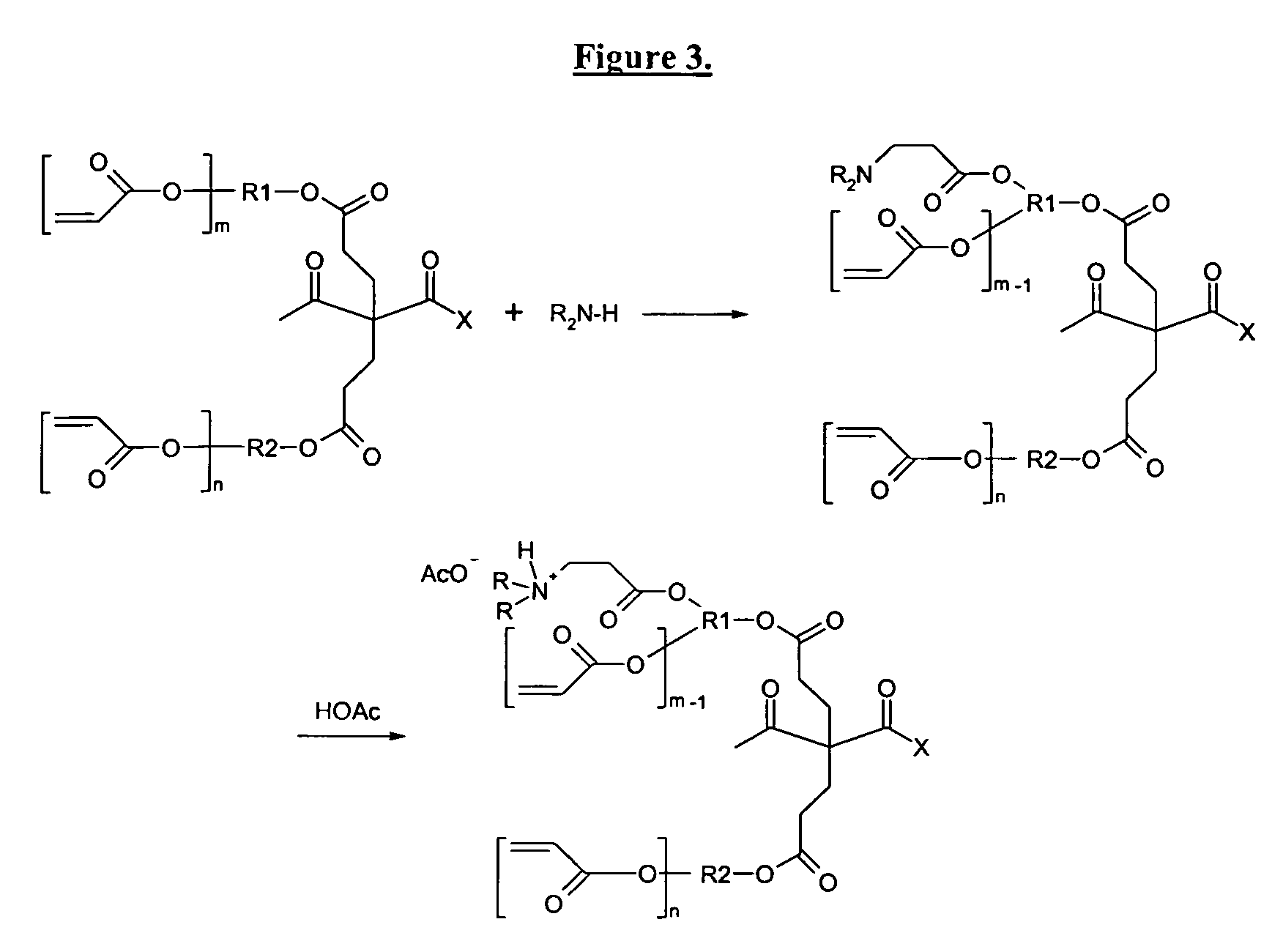Self-photoinitiating water-dispersible acrylate ionomers and synthetic methods
a technology of acrylate ionomers and self-photoinitiation, which is applied in the direction of coatings, polyurea/polyurethane coatings, etc., can solve the problems of low molecular weight fragments that may not be environmentally safe, low molecular weight fragments produced by initiators and photoinitiators that may volatilize, and fugitive emissions create safety issues for workers, consumers, and the environment. to achieve the effect of recur
- Summary
- Abstract
- Description
- Claims
- Application Information
AI Technical Summary
Benefits of technology
Problems solved by technology
Method used
Image
Examples
example 1
Synthesis of OH-Containing Michael Addition Resin I
[0092]Trimethylolpropane triacrylate (135.54 g, 0.4574 mole), 2-hydroxyethyl acrylate (53.11 g, 0.4574 mole), ethyl acetoacetate (54.11 g, 0.0307 mole), tetra-n-butylammonium bromide (2.41 g, 0.0075 mole), and glycidyl methacrylate (9.71 g. (0.0746 mole) were placed into 500 ml glass reactor. The reactor was capped with a cover equipped with mechanical stirrer, reflux condenser, and temperature monitoring thermocouple. The mixture was allowed to react, with stirring. Heat was applied in order to bring the temperature to 80° C. over a period of 50 minutes. The reaction mixture was then maintained at 80° C., for a period of five hours, until a constant refractive index (1.4796) was attained. The reaction mixture was cooled to 50° C. and 2.35 g. (0.0112 moles) ethylene glycol methacrylate phosphate (Ebecryl® 168, Trademark UCB) was added to quench the catalyst system. The reaction mixture was stirred at 50° C. for 15 minutes. The resin...
example 2
Synthesis of Polyurethane Acrylate Ionomer I
[0093]Polypropylene glycol (121.79 g, 0.0622 mole; Pluracol® P2010, hydroxyl number=57.3, nominal molecular weight 2000) (Pluracol trademark BASF Corporation), dimethylolpropionic acid (16.67 g, 0.124 mole), 133.17 grams of acetone, and 0.24 grams of dibutyltin dilaurate were placed into a 1000 ml glass reactor. The reactor was capped with a cover equipped with mechanical stirrer, reflux condenser, temperature monitoring thermocouple, and an addition funnel. The funnel was fitted with a pressure-equalizing sidearm filled with 55.48 g. (0.2488 mole) isophorone diisocyanate (IPDI). The system was flushed thoroughly with dry nitrogen and maintained under a dry nitrogen blanket. The reactor contents were stirred and heated to raise the temperature to 45° C. over a period of 20 minutes. While holding the temperature at 45° C., the IPDI was added dropwise over one hour. Following addition of the IPDI, the temperature was raised to 60° C. over th...
example 3
Synthesis of Polyurethane Acrylate Ionomer II
[0094]Stage 1. A 1000 ml glass reactor was charged with 236.1 g. (0.476 equiv.) poly(neopentyl glycol adipate) (Fomrez 55-112, hydroxyl number=113.2; Fomrez is a trademark of Witco Chemical), 63.8 g. (0.951 equiv.) dimethylolpropionic acid, 238.1 g ethyl acetate, and 0.5 g dibutyltin dilaurate. The reactor was capped with a cover equipped with mechanical stirrer, reflux condenser, temperature monitoring thermocouple, and addition funnel with pressure-equalizing sidearm filled with 211.5 g. (1.91 equiv.) isophorone diisocyanate (IPDI). The system was flushed thoroughly with dry nitrogen and maintained under a dry nitrogen blanket. The reactor contents were stirred and heated to 65° C. in 30 minutes. While holding the temperature at 65° C., the IPDI was added dropwise over 45 minutes. The reaction temperature was then raised to 80° C. and monitored by FTIR. The reaction proceeded at 80° C. until the intensity at ˜3600 cm−1 (—OH band) was no...
PUM
| Property | Measurement | Unit |
|---|---|---|
| pKa | aaaaa | aaaaa |
| pKa | aaaaa | aaaaa |
| thickness | aaaaa | aaaaa |
Abstract
Description
Claims
Application Information
 Login to View More
Login to View More - R&D
- Intellectual Property
- Life Sciences
- Materials
- Tech Scout
- Unparalleled Data Quality
- Higher Quality Content
- 60% Fewer Hallucinations
Browse by: Latest US Patents, China's latest patents, Technical Efficacy Thesaurus, Application Domain, Technology Topic, Popular Technical Reports.
© 2025 PatSnap. All rights reserved.Legal|Privacy policy|Modern Slavery Act Transparency Statement|Sitemap|About US| Contact US: help@patsnap.com



